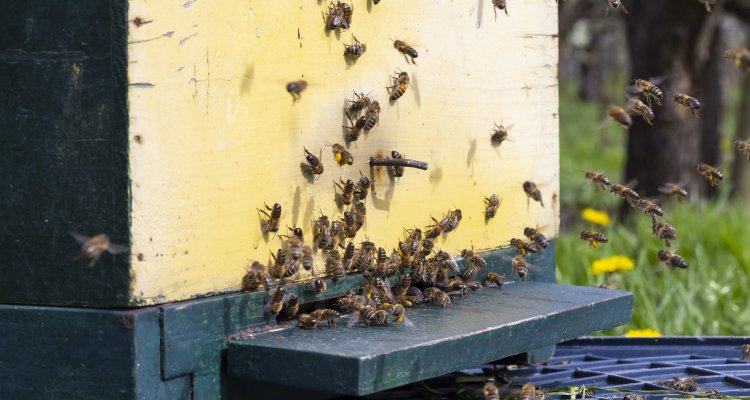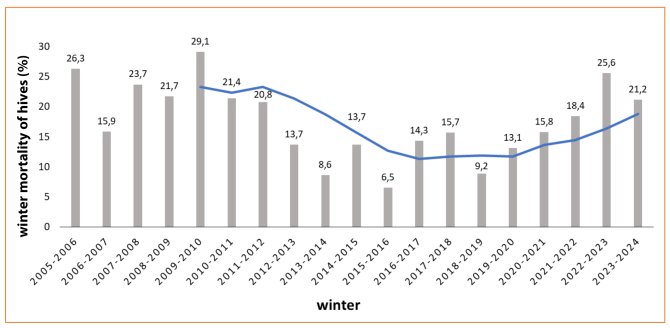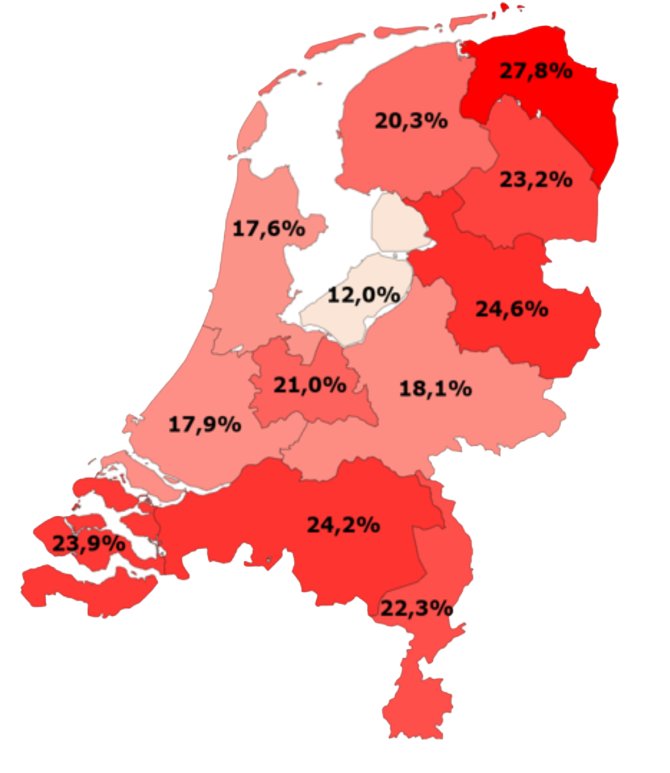
News
Dutch winter bee mortality rate above 20%
In the winter of 2023 - 2024, 21.2% of the Dutch population of honeybee colonies died. While this mortality rate is lower than that of the previous winter (Figure 1), it is still represents a worryingly high number of bee colonies that did not survive this winter period. The annual winter mortality rate is determined through a beekeeper survey conducted every year by researchers from Wageningen University & Research, in collaboration with de Nederlandse Bijenhoudersvereniging (NBV), Imkers Nederland (IN), the biodynamic beekeepers (BD-imkers) and professional beekeepers (BVNI), commissioned by the Ministry of LNV.

This year, it is especially the south and north of the Netherlands that experienced relatively high winter mortality among honeybee colonies (Figure 2). Notably, in the previous year, the highest winter mortality was primarily observed in the east, centre and western regions. However, such regional variations are common as good and bad years alternate in beekeeping practice.

A total of 2640 Dutch beekeepers participated this year in the annual COLOSS survey (COLony LOSSes, www.COLOSS.org), which is conducted in more than 40 countries; 25% of Dutch beekeepers participated. The Netherlands has about 11,000 active beekeepers; more than 95% are hobbyists. Almost half of the beekeepers (48.3%) reported that all their hives survived the winter, which is an improvement from last year (38.7%). Nonetheless, 6.7% of beekeepers faced a completely extinct bee population.
Explanations for winter mortality among bee colonies are diverse. For example, the death of the queen during winter is fatal to the hive. Additionally, combinations of factors can endanger the health of bee colonies. If bees enter winter already weakened, for example due to a combination of reduced food supply and disease, the likelihood of hive mortality increases. Two other major causes of poor bee health are bee viruses and the parasitic mite Varroa destructor.
To extent to which the invasion of the Asian hornet in the Netherlands affects winter mortality is unknown. These hornets prey on insects to feed their own larvae. Two hundred and twenty-eight beekeepers observed Asian hornets at their apiaries. The effect of this invasive species on the mortality of entire bee colonies in the Netherlands is difficult to estimate. However, we suspect that the Asian hornet will play an increasing role in the mortality of Dutch bee colonies.